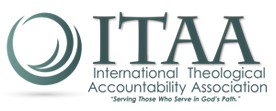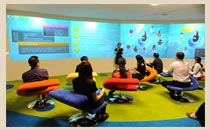As the 21st century progresses, it becomes clear that the 21st century classroom is vastly different from the classroom of the past. From teacher/student interaction, to core content, to outcome evaluation, to the integration of technology, the two educational pictures vastly differ from each other.
In terms of instructor-student interaction, the most obvious change is the amount of active participation by the students, and the manner in which the instructor engages them. Education used to be teacher-centered, in that the instructor was the center of attention and provider of information. It is now student-centered and the teacher functions as a facilitator or coach. In the ideal classroom, students and teachers have reciprocally respectful relationships as co-learners, and students are more highly motivated, thus presenting fewer discipline issues.
The physical space of current education has changed from learners as isolated individuals within four walls. Classmates in the global classroom now collaborate actively with one another and also with others around the world via the instant connections of the internet. Special needs of the students were largely ignored, except in the extreme cases which required discipline. Now, curriculum and teaching methods encompass student diversities of physical, developmental and social natures. For further discussion of issues and needs of the current classroom, please visit www.joinitaa.com.
Curriculum itself has shifted from passive, textbook driven study of “reading, writing and arithmetic” to active research-based in depth exploration and prediction. The printed texts of the “3 R’s” have been replaced by audio and visual resources, and literacy in finances, ecology, media, information technology, emotional and cognitive well-being, health and physical fitness, and cultural issues. Instead of being marginally relevant or meaningless, curriculum is related to students’ interests, aptitudes and their experiences in the real world. Students no longer spend time memorizing fragmented facts and reciting details by rote. The focus is now on what students know, what they want to know, and what they will accomplish.
In the classroom of the past, the teacher and standardized testing were the final arbiters of outcome evaluation. No one else saw a student’s work. Grades were averaged and expectations were only so high. In the 21st century classroom, grades are based on self and peer assessment in addition to formal evaluations. Expectations are high for all students, and those who want to go further are encouraged and equipped to do so.
Technology was non-existent in the classroom of the past. Students in the 21st century classroom rely on technology to help them succeed in their endeavors. Classrooms are built with technology as the center of instruction. Blended learning models are prevalent and tablets, interactive white boards, and a multitude of other technology devices are used regularly by students. Students interact via skype and other programs as well as access the internet for information on a regular basis.
It is abundantly clear that the 21st century classroom is different from the classroom of the past. The education system designed to provide for the needs of the 20th century industrially-driven society has given way to exploration and creativity required by 21stcentury opportunities. For more information about how the 21st century classroom is different from the classroom of the past, go to www.joinitaa.com.



